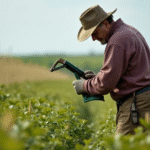Introduction
Alcohol consumption in Mexico poses not only a public health issue but also one of the primary causes and consequences of violence in vulnerable communities, according to a study by the Alcohol Action Network (RASA).
Study Findings
The study highlights that a woman living with a daily-drinking partner in Mexico has 3.5 times higher chances of experiencing severe violence. Moreover, in contexts where alcohol and violence coexist, the risk of depression quadruples and can be up to eight times greater if the woman is pregnant.
The report also warns that in areas with a high concentration of alcohol vending points, the risk of excessive monthly consumption increases by 1.3 times and weekly consumption by 1.9 times.
Expert Insights
Through interviews with experts from institutions such as the Community Health Mental and Addiction Center, the Gender Violence Prevention and Attention Territorial Unit, and the Youth Services Center, the study documented how alcohol not only acts as a catalyst for violence in family, community, and couple settings but also how its cultural normalization has hindered problem recognition and the development of effective public policies.
Structural and Commercial Factors
The study explains that beyond individual or family environments, structural factors like poverty, marginalization, inequality, and commercial determinants such as high alcohol availability and constant advertising reinforce the cycle of consumption and violence.
RASA also pointed out a significant absence in the system: programs targeting perpetrators. Although effective therapies like cognitive-behavioral treatment and anger management programs exist, systematic efforts to address the root causes of violent behavior from a public health perspective are scarce.
Recommendations
In response to this situation, RASA proposed concrete recommendations such as:
- Limiting alcohol sale hours and locations
- Banning alcohol advertising
- Increasing alcohol taxes
- Raising the legal minimum drinking age to 21
- Strengthening preventive programs in schools and vulnerable communities, ensuring adequate funding
Key Questions and Answers
- What does the study reveal about alcohol consumption and violence in Mexico? The study by RASA indicates that alcohol consumption significantly increases the likelihood of violence in Mexico, particularly in vulnerable communities.
- How does alcohol contribute to violence? Alcohol acts as a catalyst for violence in family, community, and couple settings. Its cultural normalization has also made it challenging to recognize the problem and implement effective public policies.
- What are the structural factors that exacerbate this issue? Poverty, marginalization, inequality, high alcohol availability, and constant advertising are some structural factors that reinforce the cycle of consumption and violence.
- What recommendations does RASA propose to address this issue? RASA suggests limiting alcohol sale hours and locations, banning alcohol advertising, increasing alcohol taxes, raising the legal minimum drinking age to 21, and strengthening preventive programs in schools and vulnerable communities with adequate funding.






